Rebuilding A Locking Hood Release
|
This post was updated on .
By using a non-locking hood release. Gary, feel free to add this wherever you may see fit (Resources/Interior?).
Author: Shaun (salans7) This is just a small how-to on replacing the cable on a locking hood release unit with the cable from a basic non-locking hood release. I am by no means a professional, so I take no responsibility for any damage you cause to either yourself, or your locking hood release cable. This is the method I used to repair the cable on my F150, and it worked great. Investigate all of your options before choosing to utilize this method of repair. Tools: -10 mm socket for the under-dash mounting bolts (your truck may differ in size) - 8 mm socket (latch mechanism cover) - Small pry bar, large flathead screwdriver, or pliers (your choice). -Grinder or cut off wheel. Electric or Air powered. - Safety glasses and related PPE (Think smart, be safe) - Drill and drill bit set (For rivets) Step 1. Remove latch cable security plate. Bolt size is an 8MM. It is unnecessary to remove the latch assembly to do this, you just need to lift up on the upper grille support to gain clearance for the cover to slide out of it's position. But if you don't want to squeeze it through that way or you have an all original truck with perfect paint, remove the latch assembly to gain more room. 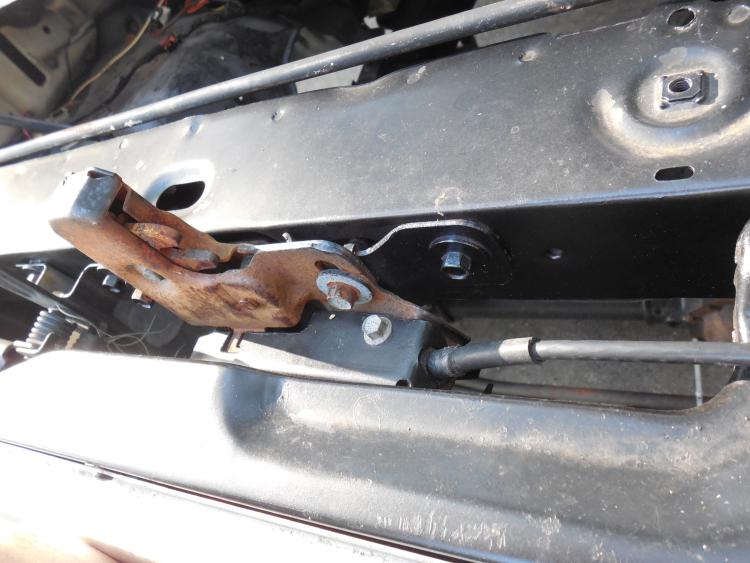 Step 2: Remove cable grommet from latch mechanism. This is best done with a pry bar as shown, but I have also used pliers to put pressure on the grommet and "push" it out. Once the grommet is free, pop the black plastic cover off the cable loop post if equipped. Slip the cable end loop off it's post, and remove the cable from it's holding clips along the top of the radiator support and the fender. 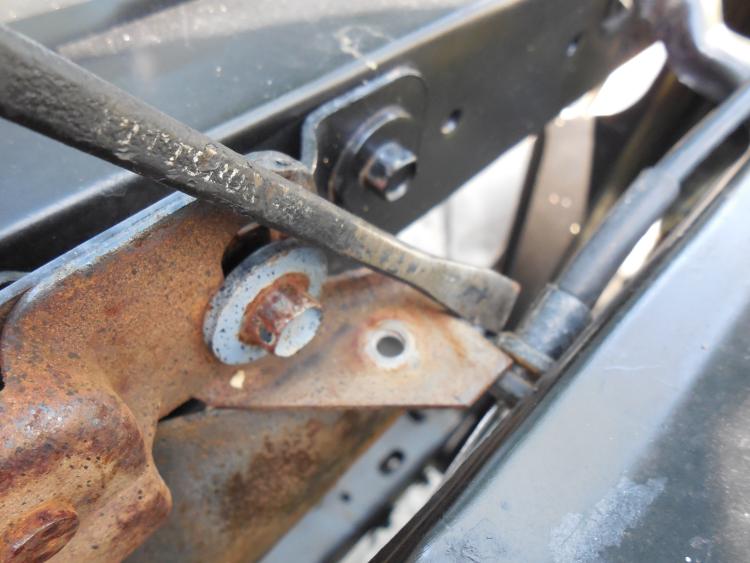 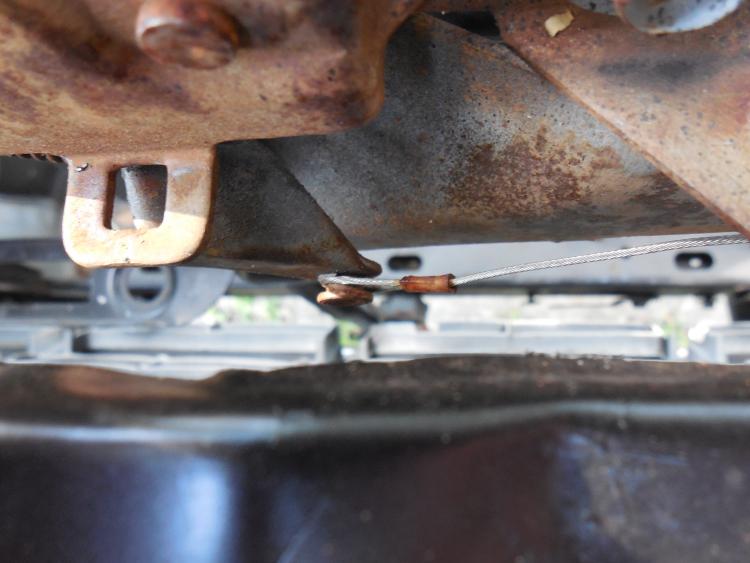 Step 3: Remove two bolts (10mm, your truck may differ) holding locking release handle from the bottom of the dash. Once the hood release handle assembly is free, slowly feed the release cable through the firewall and into the cab. 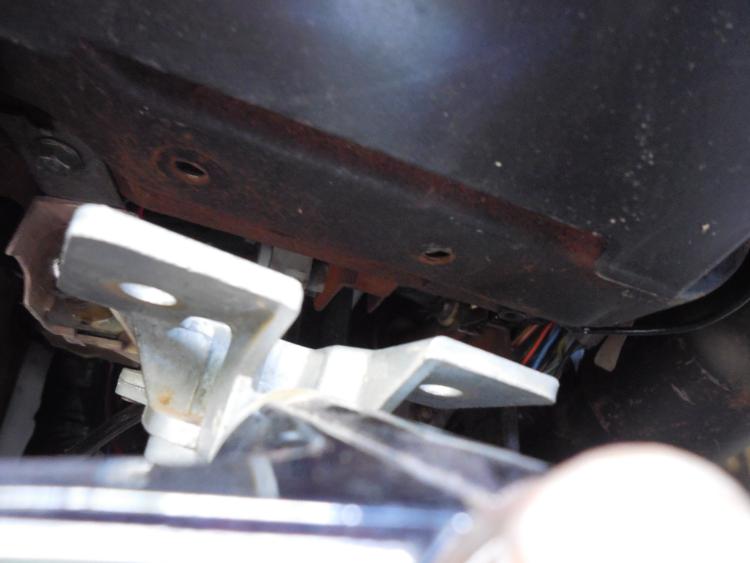 Both hood release cables together, we will use the non-locking version to repair the locking version.  Locking hood release: 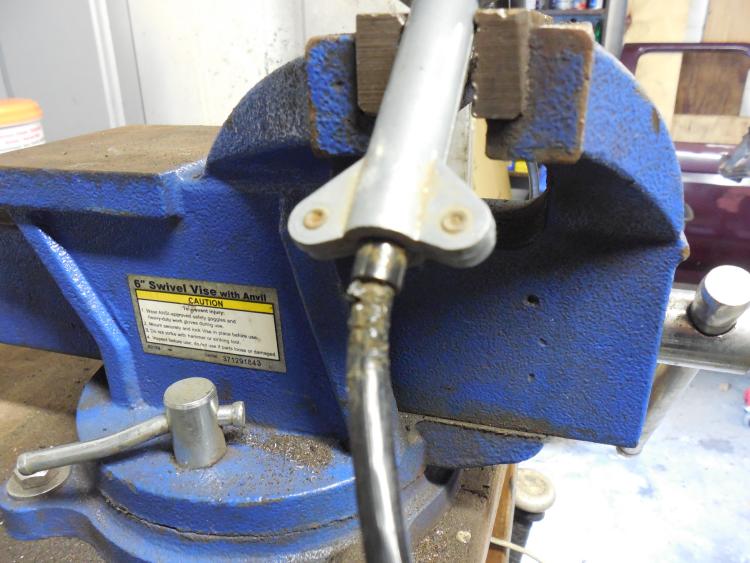 Non-locking hood release: 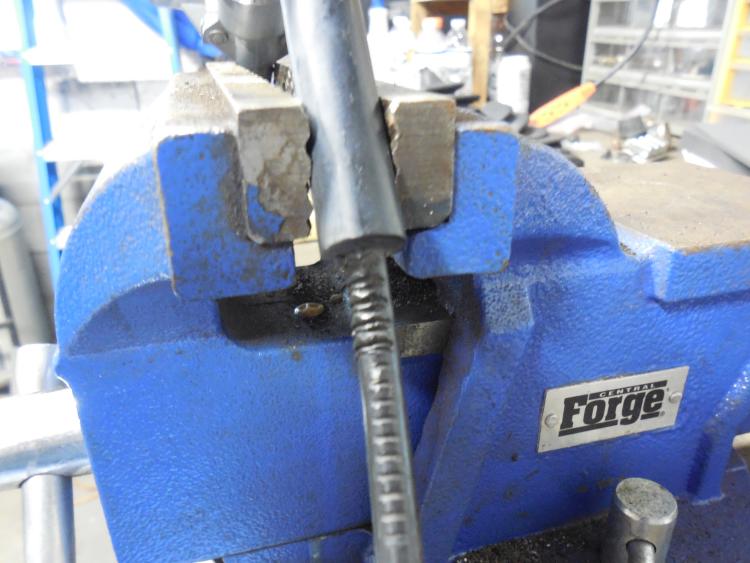 Step 4: Use whatever means you see fit to remove as much of the plastic on the handle as you can. I used a small cutoff wheel to cut the excess plastic away, and then crunched what was left in my vise so that I could peel it away from the handle assembly without having to worry about pinching the cable, you need to avoid any damage to the cable, sheath, or it's ferrule. 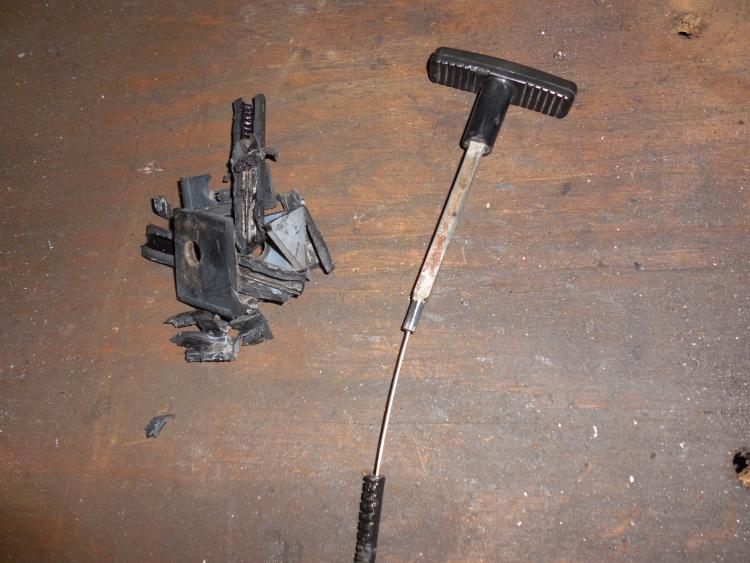 Step 5: Cut the handle section from the small ferrule. If you're wondering what a ferrule is, it is the section of the handle that the metal cable inserts into. It is the smaller section of the handle, and is in the shape of a hexagon. You will need to retain this ferrule, so try to cut on the square part of the handle, rather than the ferrule . Be careful not to over cut the ferrule or else the ferrule will fit loosely into the locking handle. Once you separate the two halves of the release handle in the next step, you will file down the ferrule until it fits tightly into the locking release handle. 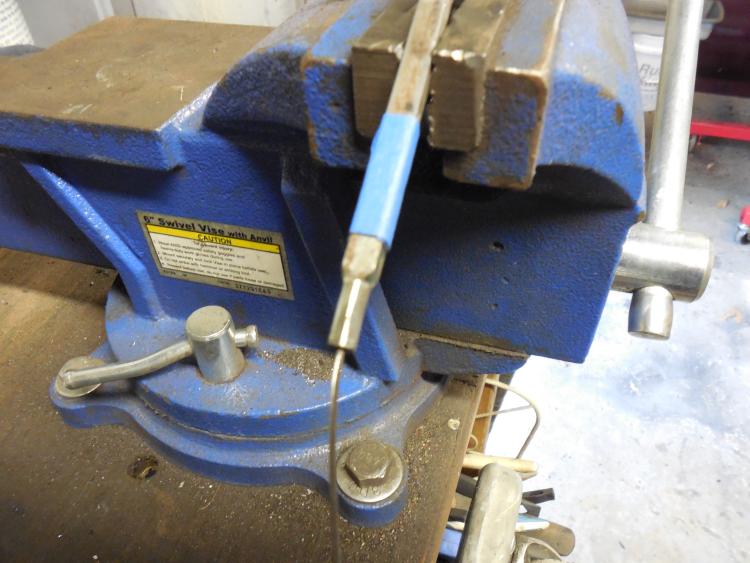 Step 6: You will have to drill out the rivets that hold the two lock handle housing halves together. There are 4 rivets total. You will see how the factory cable is held in place once you separate the two halves, and also how the ferrule fits into the chrome handle itself. I unfortunately do not have a picture of the handle by itself, but it should be self-explanatory. Before permanently installing the cable into the handle, take some time to address the large grommet in the firewall, as it is probably in poor shape after 30+ years and will be a source of leaks into the cab via the cable. Mine was in good shape so I do not have a section on how to fix the grommet. 
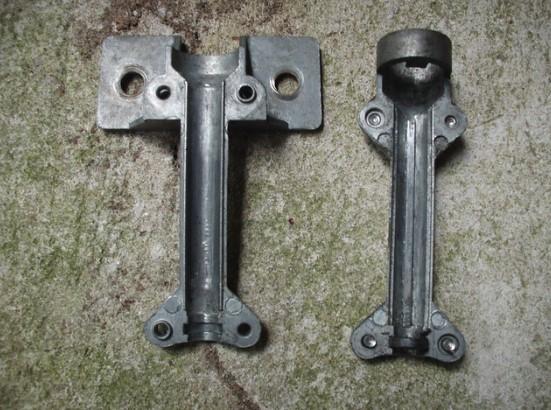 Step 7: (Written by Scott aka kramttocs) The L unit cable has a retaining ring piece adhered to it that we need to get onto the NL cable. You can see it here in the vice: 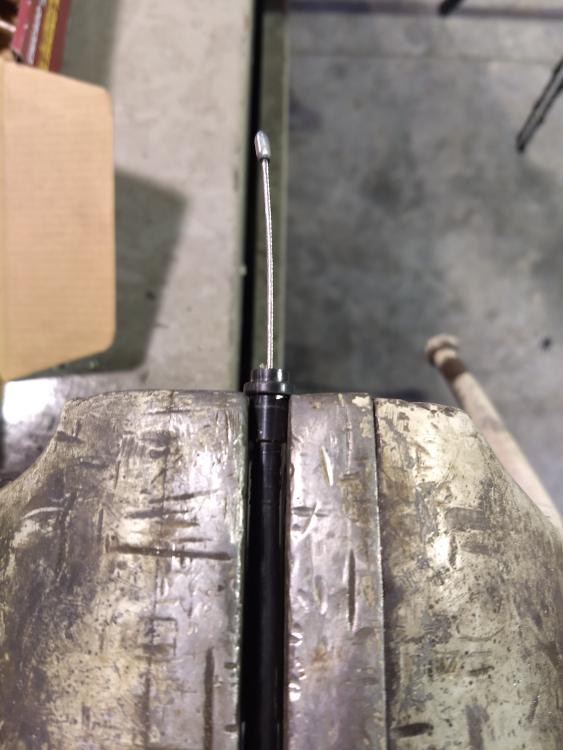 My hope was that I could heat it with a heat gun while pulling on the cable and the cable would slide out of the ring piece easy peasy. No such luck. It did come apart but it left some of the sheathing in it.  I used a drill to clean it out. It was a bit of a pain because there is a fine line between the ring spinning and crushing it in the vice. Eventually it was clean. 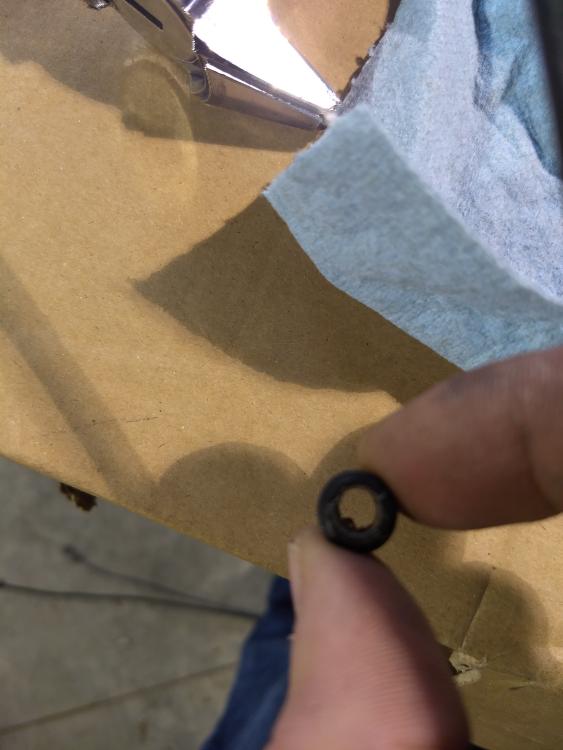 Here you can see the ring next to the previously cut off handle (now ferrule) that it needs to go on. 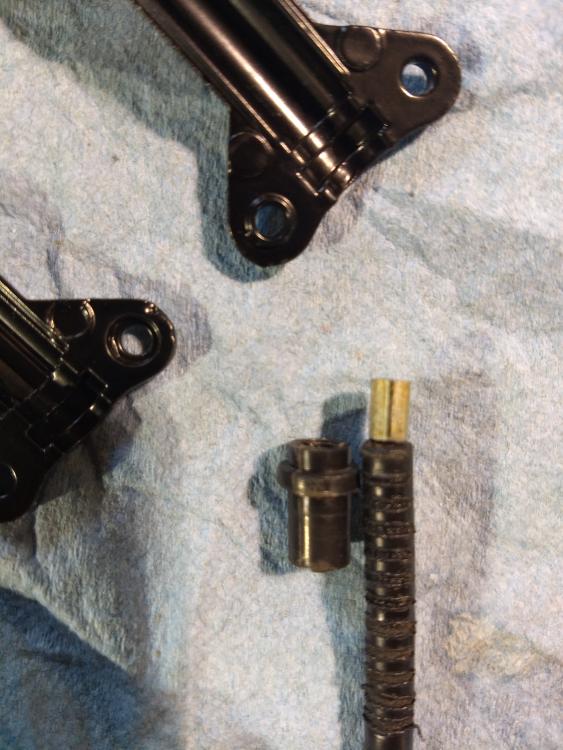 I picked up some loctite plastic glue (all types) since I didn't want to rely on just a friction fit. 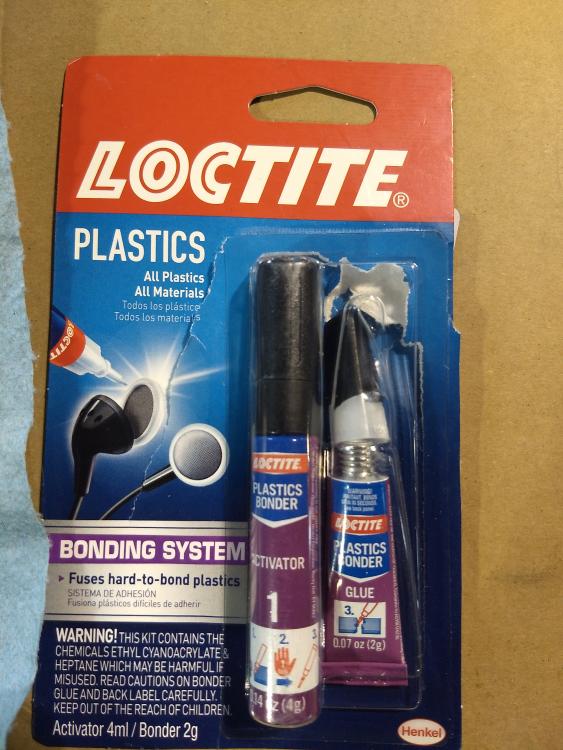 Even with the ring cleaned out, dry fitting it wasn't happening. Because having some valleys (like the crimp marks in the sheathing) are a good thing for the glue to bite into I didn't want to shave the sheathing down smooth. Instead I used a 7mm tap/die to thread both pieces. This allowed the ring to thread on there while still retaining valleys for the glue. Applied the activator/glue and then threaded the ring so the end of the sheathing was flush. 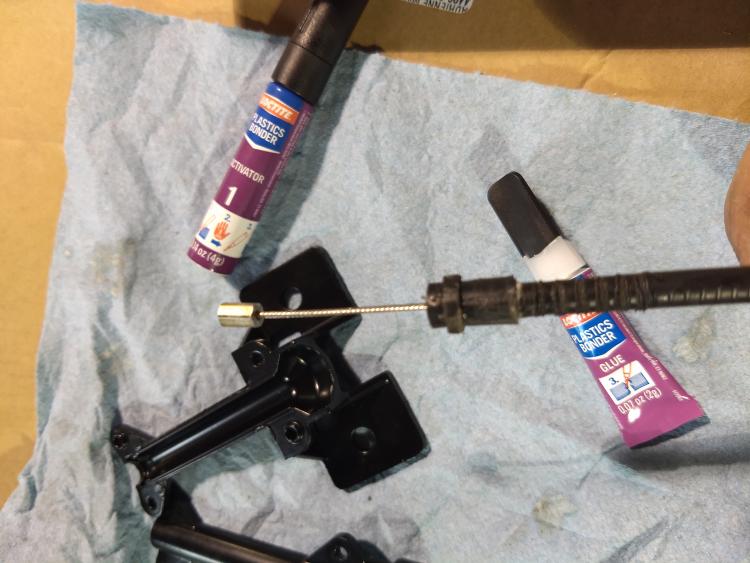 I have no doubt the glue would have been enough but I wanted to put some adhesive heat shrink on it anyways. 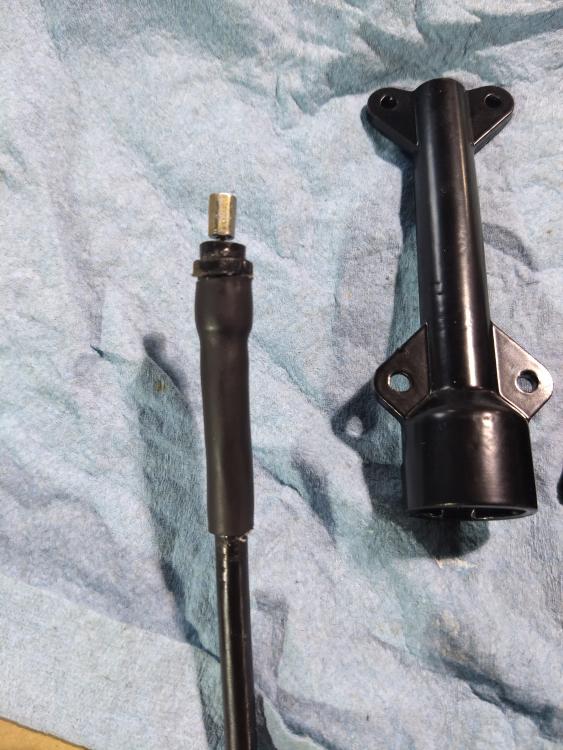 While it was out I applied a few drops of oil into the sheathing. Step 8: It is your choice as to what you use to re-attach the two housing halves. Ford used rivets, but you can also use small bolt/nut combos, or maybe even just coarse thread bolts. Your choice, just make sure it's strong enough to keep the two halves together. Step 9: Now you will need to re-run the new cable through the firewall and into the engine compartment. Installation is the reverse of removal. Make sure you test the hood release and lock function and make sure it works smoothly. If so, job well done. |
Re: Rebuilding A Locking Hood Release
|
Administrator
|
Well done, Shaun! Where do you think it should go? I can think of a couple of possibilities, both of which start with Documentation/:
Body/Hood Latch: Right now there's just the FSM section on R&R'ing the hood latch. But I could add tabs and have one for the FSM section and one for repairing the locking hood latch.Underhood: We don't have a hood latch section there, but could have.I think Body/Hood Latch. You?
Gary, AKA "Gary fellow": Profile
Dad's: '81 F150 Ranger XLT 4x4: Down for restomod: Full-roller "stroked 351M" w/Trick Flow heads & intake, EEC-V SEFI/E4OD/3.50 gears w/Kevlar clutches
|
|
I agree with body/hood latch. It could also go under the Resources tab in the forum listing? That's probably where I should have posted it.
|
Re: Rebuilding A Locking Hood Release
|
Administrator
|
I can move it to Resources. But I think it deserves to be in Documentation as well. I'll work on it tomorrow. Thanks for doing that.
Gary, AKA "Gary fellow": Profile
Dad's: '81 F150 Ranger XLT 4x4: Down for restomod: Full-roller "stroked 351M" w/Trick Flow heads & intake, EEC-V SEFI/E4OD/3.50 gears w/Kevlar clutches
|
|
I agree.

|
Re: Rebuilding A Locking Hood Release
|
Administrator
|
Shaun - Please check out this page: Documentation/Body/Hood Latch. And let me know what needs to change.
As you'll see, some of the images turned out to be larger than others if you are using a desktop device to view them. On a mobile device they are big enough that they are full width anyway, but on a desktop they are only as big as the original pic. I'm not pleased with some being bigger than others, and can fairly easily make them all the same size if that's ok with you. But, then the question is, do you want them to be full screen on a desktop or maybe 2/3 screen or 1/2 screen? Also, you may notice that I Photoshopped the first pic in Step 6. It was soooooo dark and begged for lightening up. See what you think of that as well. Anyway, it is your document so please tell me what to change. And, I'll move the how-to into Resources after we get things finalized on the Hood Latch page.
Gary, AKA "Gary fellow": Profile
Dad's: '81 F150 Ranger XLT 4x4: Down for restomod: Full-roller "stroked 351M" w/Trick Flow heads & intake, EEC-V SEFI/E4OD/3.50 gears w/Kevlar clutches
|
|
Looks good to me on my phone, but I will have to check on the desktop later tonight. If the pictures are showing up strange, feel free to adjust them. The only picture that was a different size on my end was the one that shows the two halves apart, and it was only slightly smaller.
Otherwise, looks good to me. |
Re: Rebuilding A Locking Hood Release
|
Administrator
|
I made that one larger. See if that helped.
Gary, AKA "Gary fellow": Profile
Dad's: '81 F150 Ranger XLT 4x4: Down for restomod: Full-roller "stroked 351M" w/Trick Flow heads & intake, EEC-V SEFI/E4OD/3.50 gears w/Kevlar clutches
|
|
Everything looks good to me on desktop as well.
Now for the changes I made. -I added Scott's contribution into mine, it is labeled as Step 7. Because of this, I did have to re-number the remaining steps since Scott's contribution was an additional step. -I erased the following sentence from Step 6 : "Below in the pic there should be a grommet in the small end of the housing. You will need to get creative and reproduce something similar in order to keep the cable from pulling out of the back of the handle. " |
Re: Rebuilding A Locking Hood Release
|
Administrator
|
Ok, thanks. But getting that added will take a bit of "quiet time" on my part as I'll have to follow along on two screens. And that means in the shop with the two monitors. Tomorrow!
Gary, AKA "Gary fellow": Profile
Dad's: '81 F150 Ranger XLT 4x4: Down for restomod: Full-roller "stroked 351M" w/Trick Flow heads & intake, EEC-V SEFI/E4OD/3.50 gears w/Kevlar clutches
|
|
No hurry at all, thanks for all the work you do behind the scenes!

|
Re: Rebuilding A Locking Hood Release
|
Administrator
|
Ok, Shaun & Scott, please go look at the page: Documentation/Body/Hood Latch. See if I did it correctly and if the pictures seem proper. And by that I mean all the same size and not "in your face". I think we are good but want to put the finishing touches on it so we can say it is done and dusted.
Gary, AKA "Gary fellow": Profile
Dad's: '81 F150 Ranger XLT 4x4: Down for restomod: Full-roller "stroked 351M" w/Trick Flow heads & intake, EEC-V SEFI/E4OD/3.50 gears w/Kevlar clutches
|
| Edit this page |

